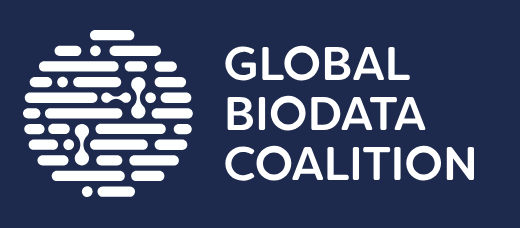The name of this superfamily has been modified since the most recent official CATH+ release (v4_3_0). At the point of the last release, this superfamily was named:
"Homeodomain-like
".
FunFam 561: Transcription factor MYB75
Please note: GO annotations are assigned to the full protein sequence rather than individual protein domains. Since a given protein can contain multiple domains, it is possible that some of the annotations below come from additional domains that occur in the same protein, but have been classified elsewhere in CATH.
There are 3 GO terms relating to "molecular function"
The search results have been sorted with the annotations that are found most frequently at the top of the
list. The results can be filtered by typing text into the search box at the top of the table.
| GO Term | Annotations | Evidence |
|---|---|---|
|
DNA-binding transcription factor activity GO:0003700
A protein or a member of a complex that interacts selectively and non-covalently with a specific DNA sequence (sometimes referred to as a motif) within the regulatory region of a gene to modulate transcription. Regulatory regions include promoters (proximal and distal) and enhancers. Genes are transcriptional units, and include bacterial operons.
|
4 | Q9FE25 (/ISS) Q9FNV8 (/ISS) Q9FNV9 (/ISS) Q9ZTC3 (/ISS) |
|
Protein binding GO:0005515
Interacting selectively and non-covalently with any protein or protein complex (a complex of two or more proteins that may include other nonprotein molecules).
|
3 | Q9FE25 (/IPI) Q9FNV8 (/IPI) Q9ZTC3 (/IPI) |
|
DNA-binding transcription factor activity GO:0003700
A protein or a member of a complex that interacts selectively and non-covalently with a specific DNA sequence (sometimes referred to as a motif) within the regulatory region of a gene to modulate transcription. Regulatory regions include promoters (proximal and distal) and enhancers. Genes are transcriptional units, and include bacterial operons.
|
1 | Q9FE25 (/TAS) |
There are 13 GO terms relating to "biological process"
The search results have been sorted with the annotations that are found most frequently at the top of the
list. The results can be filtered by typing text into the search box at the top of the table.
| GO Term | Annotations | Evidence |
|---|---|---|
|
Response to jasmonic acid GO:0009753
Any process that results in a change in state or activity of a cell or an organism (in terms of movement, secretion, enzyme production, gene expression, etc.) as a result of a jasmonic acid stimulus.
|
3 | Q9FE25 (/IEP) Q9FNV8 (/IEP) Q9FNV9 (/IEP) |
|
Regulation of anthocyanin biosynthetic process GO:0031540
Any process that modulates the frequency, rate or extent of the chemical reactions and pathways resulting in the formation of anthocyanins.
|
3 | Q9FE25 (/IMP) Q9FNV8 (/IMP) Q9FNV9 (/IMP) |
|
Regulation of transcription, DNA-templated GO:0006355
Any process that modulates the frequency, rate or extent of cellular DNA-templated transcription.
|
2 | Q9FNV9 (/TAS) Q9ZTC3 (/TAS) |
|
Response to oomycetes GO:0002239
Any process that results in a change in state or activity of a cell or an organism (in terms of movement, secretion, enzyme production, gene expression, etc.) as a result of a stimulus from an oomycetes.
|
1 | Q9FE25 (/IEP) |
|
Response to salt stress GO:0009651
Any process that results in a change in state or activity of a cell or an organism (in terms of movement, secretion, enzyme production, gene expression, etc.) as a result of a stimulus indicating an increase or decrease in the concentration of salt (particularly but not exclusively sodium and chloride ions) in the environment.
|
1 | Q9FE25 (/IEP) |
|
Anthocyanin-containing compound biosynthetic process GO:0009718
The chemical reactions and pathways resulting in the formation of anthocyanins, any member of a group of intensely colored soluble glycosides of anthocyanidins.
|
1 | Q9FE25 (/IMP) |
|
Response to ethylene GO:0009723
Any process that results in a change in state or activity of a cell or an organism (in terms of movement, secretion, enzyme production, gene expression, etc.) as a result of an ethylene (ethene) stimulus.
|
1 | Q9FE25 (/IEP) |
|
Response to auxin GO:0009733
Any process that results in a change in state or activity of a cell or an organism (in terms of movement, secretion, enzyme production, gene expression, etc.) as a result of an auxin stimulus.
|
1 | Q9FE25 (/IEP) |
|
Sucrose mediated signaling GO:0009745
A series of molecular signals mediated by the detection of sucrose.
|
1 | Q9FE25 (/IMP) |
|
Jasmonic acid mediated signaling pathway GO:0009867
A series of molecular signals mediated by jasmonic acid.
|
1 | Q9FE25 (/IMP) |
|
Removal of superoxide radicals GO:0019430
Any process, acting at the cellular level, involved in removing superoxide radicals (O2-) from a cell or organism, e.g. by conversion to dioxygen (O2) and hydrogen peroxide (H2O2).
|
1 | Q9FE25 (/IMP) |
|
Positive regulation of anthocyanin biosynthetic process GO:0031542
Any process that activates or increases the frequency, rate or extent of the chemical reactions and pathways resulting in the formation of anthocyanins.
|
1 | Q9FE25 (/IMP) |
|
Response to karrikin GO:0080167
Any process that results in a change in state or activity of a cell or an organism (in terms of movement, secretion, enzyme production, gene expression, etc.) as a result of a karrikin stimulus. Karrikins are signaling molecules in smoke from burning vegetation that trigger seed germination for many angiosperms (flowering plants).
|
1 | Q9ZTC3 (/IEP) |
There are 0 GO terms relating to "cellular component"
The search results have been sorted with the annotations that are found most frequently at the top of the
list. The results can be filtered by typing text into the search box at the top of the table.
